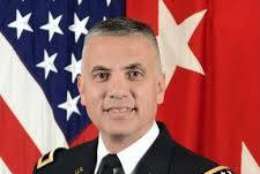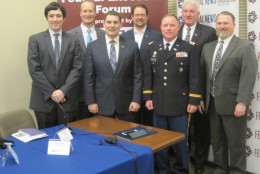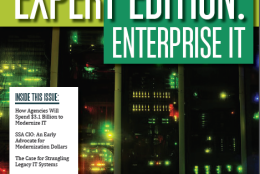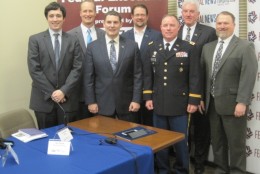SDFM The Business of Defense
-
Tune in to learn what the career workforce and political apparatus are doing to prepare for the 2017 Presidential transition! May 20, 2016
May 20, 2016 “We really focus on that endpoint protection,” Steven Hernandez, CISO, acting CTO and director of information assurance for the Office of Inspector General at HHS said on Federal News Radio’s In Focus. “Not only, at some point, that endpoint probably had to handle keys or certificates to do that job, to get that encryption in place – that’s very helpful for us – but also for anything that we run, that’s where we want the encryption to really take place. Because I guarantee you at some point that magical network encryption box you have is going to fail, or a network engineer is going to make a mistake and going to route around it, or your cloud provider is going to make a mistake and all of a sudden your information is in the public network. And so, as a custodian of the data, at that application layer, sometimes at that session layer, that’s where we really focus our efforts.”
May 20, 2016-
Pentagon Solutions online chat with Cyber National Mission Force Commander Maj. Gen. Paul Nakasone.
May 19, 2016 -
2015 was known as “The Year of Cybersecurity Incidents.” However, this isn’t much different from what we saw in 2014, and 2013 and 2012. It’s just getting worse. Each time the public is exposed to a “massive breach,” it is bigger and more destructive than the last.
May 18, 2016 On this edition of “Disaster Relief for America”, hosts Tim Karney and Tom Moran interview Sean Murphy, the CEO and President of Lootok.
May 17, 2016-
The Homeland Security Department's National Cybersecurity and Communications Integration Center analyzes information to help give other federal, state and local officials a clearer picture of real and potential threats.
May 17, 2016 -
This program will provide a progress report on secure cloud computing in government.
May 17, 2016 Why is federal acquisition so complex? What is category management? How is the federal government driving innovation in acquisition? What is being done to strengthen government-industry relationships? Join host Michael J. Keegan as he explores these questions and more with Anne Rung, Administrator, Office of Federal Procurement Policy (OFPP), Office of Management and Budget.
May 16, 2016Protecting data on government networks is a critical component of our national cyber security strategy. Indeed, the Administration’s drive to strengthen federal cybersecurity calls for a re-examination of government’s legacy approach that requires every agency to build and defend its own networks. Agencies' concerns range from the use of encryption to the data explosion from the internet of things.
May 15, 2016-
In this Expert Edition, Federal News Radio shows you what nimble-minded individuals in agency IT shops are doing to continuously deliver mission in a new, better and more cost-effective way.
May 15, 2016 “In the end it’s behavioral,” William Yurek, program director of cyber intrusion investigations at the Defense Criminal Investigative Service said on Federal News Radio’s In Focus. “People will always be the weakest link at any level. They will always be what we have to key on. Unfortunately, we forget about that. Behavioral analytics is an attempt to get us back to the idea of looking at how people behave, in the simplest sense. But how we can use that in both the predictive sense, and frankly, in my viewpoint as an investigator often times we come in and it’s kind of too late. But there are behavioral factors you can use to analyze bad guy activity and try and create a behavioral finger print of a human being.”
May 13, 2016-
This program will provide a progress report on secure cloud computing in government.
May 13, 2016 On this edition of “Disaster Relief for America”, hosts Tim Karney and Tom Moran interview John D. Murphy, the Chief Operating Officer of the National Weather Service.
May 10, 2016Is the path to ERM success a defined roadmap?
May 09, 2016







